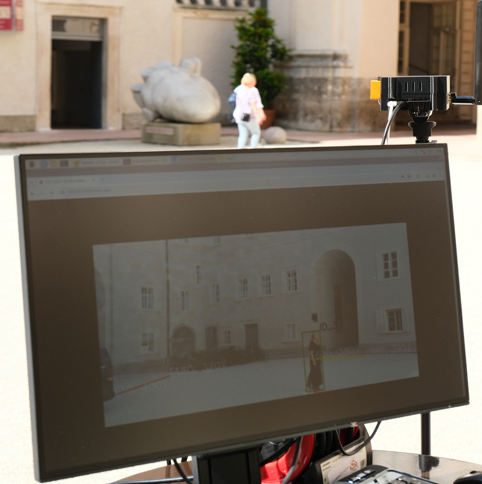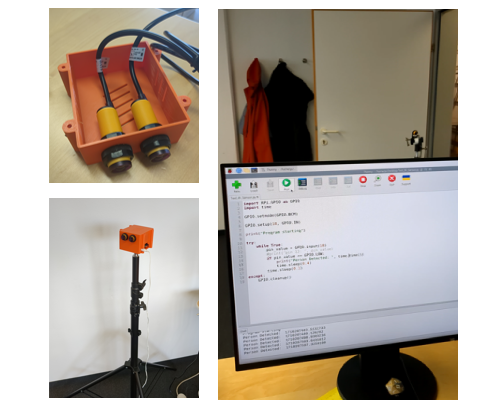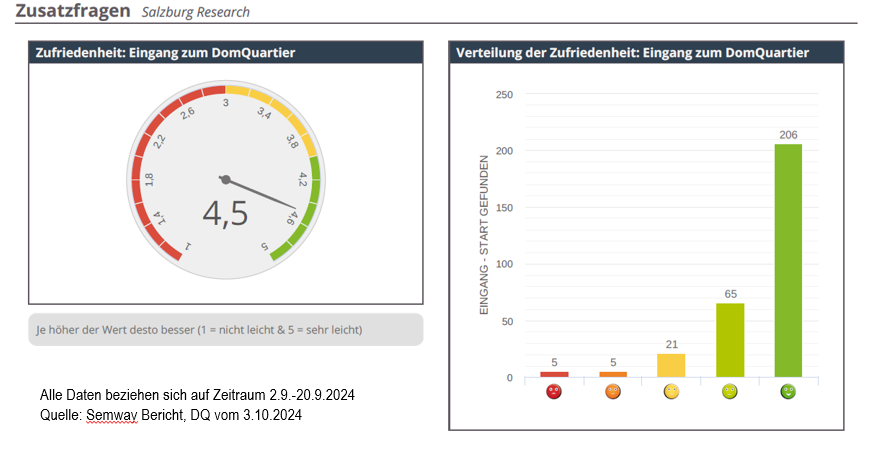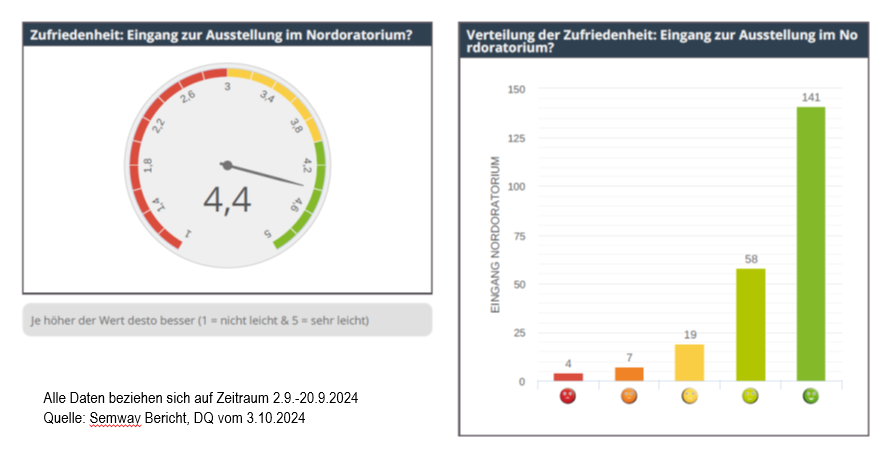Customer: Domquartier GmbH
CiMo Partner: Salzburg Research Forschungsgesellschaft mbH
Challenge
The DomQuartier Salzburg, a museum complex around Salzburg’s Cathedral Square, is being expanded and is getting a new visitor center. A tour leads through the extensive collection of the unique world cultural heritage and the architecturally very interesting historical rooms.
In order to distribute the flow of visitors more evenly in the exhibition rooms in terms of time and interests and to improve the visitor experience of individual exhibits, new information offerings are to be developed using data from sensor and AI-based systems. The aim is a visitor guidance concept that, based on objective real-time data on visitor distribution, recommends individual tours tailored to the respective interests and avoids traffic jams. This is based on data on the orientation, distribution and density of visitors.
Methods
The technical solution was developed through iterative testing. Initial attempts with Bluetooth Low Energy (BLE) and ultrasonic sensors were discarded due to inaccuracies. The team then turned to infrared-based people counters, using Raspberry Pi 5s with actively reflective infrared barriers in 3D printed enclosures designed to track the direction of visitors and controlled by a finite state machine. After successful indoor tests in TechnoZ and the Nordoratorium, the system was further improved by optimizing the logic and algorithm.
In addition, visitor counting was integrated with SR computer vision technology on Raspberry Pi 5s with camera module 3, using YOLOv8 for person recognition. This facility accurately recorded direction of movement by tracking positions relative to an entry line to ensure privacy while enabling precise visitor counting and direction tracking.


Results
The sensor-based visitor guidance system implemented by Salzburg Research through EDIH brought measurable benefits to DomQuartier Salzburg GmbH and provided important insights into the distribution and flow of visitors. A comparison of the computer vision (CV) counter with manual counting in the courtyard confirmed the accuracy of the system and showed a slight deviation during peak events, which are typically influenced by challenges such as white clothing, people standing close together and high visitor density. In quantitative terms, the data showed that 80% of visitors entered the courtyard from the Residence Square, with peak time being between 10 and 11 am, with visitor numbers steadily increasing until noon and gradually decreasing in the afternoon. On average, 58 people entered the courtyard every 15 minutes. A week-by-week analysis showed that the distribution of visitors remained the same despite fluctuations in ticket sales and weather, although higher attendance was recorded on rainy days. Insights into traffic on the terrace and in the Nordoratorium showed that only 10% of terrace visitors entered the Nordoratorium, with peaks fluctuating only minimally throughout the day.
These insights enabled DomQuartier to optimize visitor flow management and staff deployment, and to align resources to peak times. In addition, EDIH improved its digital capacity to track visitors in real time, identify peak times and monitor the impact of external factors such as weather.

